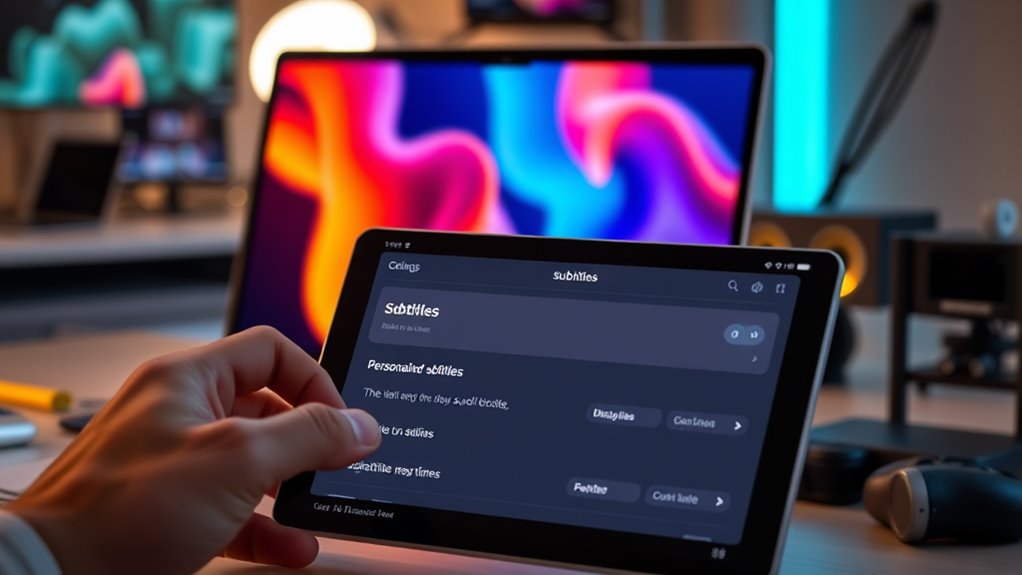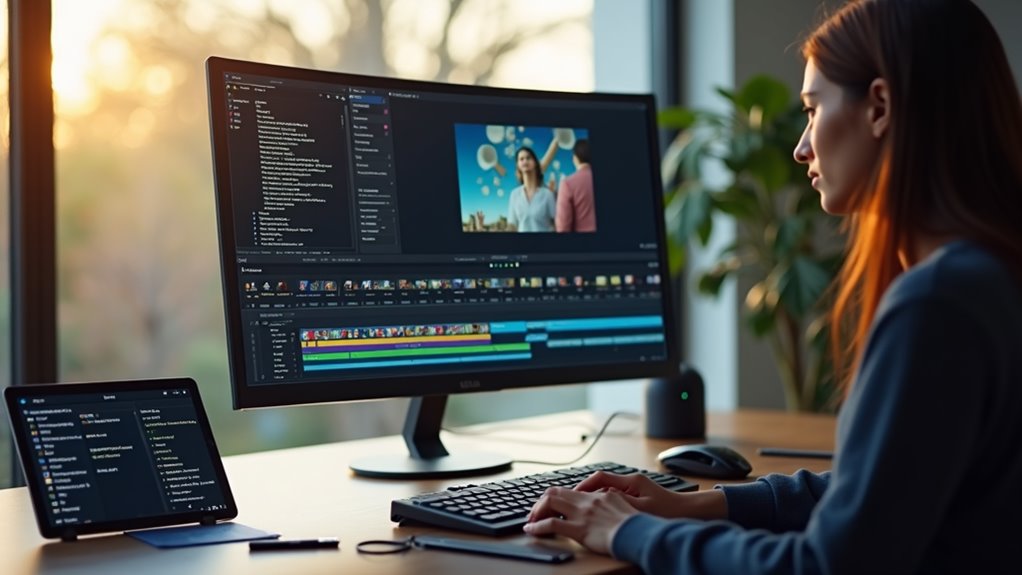Trong năm 2026, dịch thuật phụ đề video không còn chỉ đơn thuần là chuyển ngữ mà hướng tới việc cá nhân hóa và tự động hóa.
Các công nghệ trí tuệ nhân tạo và học máy được ứng dụng để nâng cao độ chính xác và đáp ứng đa dạng nhu cầu người xem.
Một trong những giải pháp tiên tiến hiện nay là vMixAI SRT – công nghệ do vMix Việt Nam phát triển, giúp biến quy trình phức tạp thành vài cú nhấp chuột với tốc độ làm phụ đề siêu nhanh, chính xác và tự nhiên hơn bao giờ hết.
Sự kết hợp này hứa hẹn thay đổi sâu sắc cách người dùng trải nghiệm nội dung số.
Tuy nhiên, những thách thức trong quá trình triển khai vẫn còn đó.
Để trải nghiệm dịch vụ Dịch thuật Phụ đề Video & Lồng tiếng Chuyên nghiệp ứng dụng trí tuệ nhân tạo AI, quý khách có thể liên hệ qua Zalo/SMS: 0981.243.678 hoặc truy cập website: https://vmixgpt.com/dich-thuat-phu-de-video/.
Những điểm chính
- AI và học máy tăng cường độ chính xác và hiệu quả trong dịch thuật phụ đề video năm 2026.
- Cá nhân hóa phụ đề theo ngôn ngữ, màu sắc, kích thước và phương ngữ đáp ứng nhu cầu người xem đa dạng.
- Tự động hóa quy trình tạo và chỉnh sửa phụ đề giúp giảm thiểu lỗi và tăng tốc độ xử lý nội dung video.
- Thuật toán phân tích hành vi người dùng cung cấp cài đặt phụ đề tối ưu, nâng cao trải nghiệm xem video cá nhân.
- Phụ đề dịch tự động đồng bộ thời gian thực, hỗ trợ đa ngôn ngữ, cải thiện khả năng tiếp cận và giữ chân người dùng.
Ứng dụng trí tuệ nhân tạo trong dịch thuật phụ đề
The integration of artificial intelligence in subtitle translation has transformed the industry by enhancing accuracy and efficiency. AI-powered tools automate the initial translation process, markedly reducing turnaround times compared to manual methods. These systems can process large volumes of video content swiftly, enabling real-time subtitle generation for live broadcasts and streaming platforms. Additionally, AI facilitates consistent terminology use and style adherence across multiple languages, ensuring a coherent viewing experience. By minimizing human error, AI contributes to improved subtitle quality, especially in handling idiomatic expressions and cultural nuances. The technology also supports seamless integration with video editing software, streamlining workflows for content creators and localization teams. While AI does not fully replace human translators, it serves as a critical aid, optimizing resource allocation and accelerating project delivery. Overall, AI’s application in subtitle translation marks a notable shift toward automation, reshaping industry standards and expectations for multilingual video content.
Công nghệ học máy nâng cao độ chính xác dịch thuật
Building on the advancements brought by artificial intelligence, machine learning technology further refines subtitle translation accuracy by continuously learning from vast datasets. This iterative learning process enables models to adapt to diverse linguistic nuances, idiomatic expressions, and contextual variations, greatly reducing errors common in earlier translation methods.
Key contributions of machine learning to subtitle translation accuracy include:
- Enhanced contextual understanding: Algorithms analyze sentence structure and semantics, ensuring more precise word choices and phrase translations.
- Adaptive error correction: Systems identify and learn from past mistakes, improving future output quality through feedback loops.
- Multilingual dataset integration: Incorporating diverse language corpora helps models better grasp cultural and regional language differences.
These improvements collectively elevate the quality of translated subtitles, making content more accessible and engaging for global audiences. By leveraging machine learning, the translation process becomes not only more accurate but also more efficient, addressing challenges posed by the complexity and variability of human language in video subtitles.
Cá nhân hóa phụ đề theo nhu cầu người xem

Numerous viewers benefit from subtitle personalization tailored to their specific preferences and needs. This trend has gained momentum as streaming platforms and content creators increasingly emphasize accessibility and user experience. Personalized subtitles can adjust language, font size, color, and positioning to enhance readability for individuals with visual impairments or different language proficiencies. Additionally, customization extends to dialect selection and vocabulary simplification, accommodating diverse linguistic backgrounds and comprehension levels. These tailored options not only improve engagement but also foster inclusivity, making content accessible to a broader audience. Advanced algorithms analyze user behavior and preferences to deliver ideal subtitle settings dynamically, ensuring relevance and comfort. By prioritizing viewer-centric customization, the industry moves towards more adaptive and responsive subtitle solutions. This shift reflects an understanding that one-size-fits-all subtitles often fail to meet the varied demands of global audiences, highlighting personalization as a critical factor in the evolution of subtitle translation technology.
Tự động hóa quy trình tạo và chỉnh sửa phụ đề
Personalized subtitle settings generate vast amounts of data that fuel advancements in automation for subtitle creation and editing. Automation streamlines the traditionally labor-intensive process by leveraging artificial intelligence and machine learning algorithms, reducing human error and accelerating turnaround times. Key aspects of this automated workflow include:
- Speech recognition integration: Converts audio to text with increasing accuracy, enabling faster subtitle generation.
- Context-aware editing tools: Automatically adjust timing and phrasing to fit visual cues and viewer preferences.
- Multilingual translation engines: Provide real-time, high-quality subtitle translations across numerous languages.
These technologies collectively enhance efficiency while maintaining precision in subtitle output. Automation also allows scalable handling of large video libraries and supports continuous updates as content or user preferences evolve. By minimizing manual intervention, the subtitle creation and editing process becomes more responsive and adaptable to diverse viewing contexts, setting a new standard for video accessibility and personalization.
Tác động của dịch thuật phụ đề đến trải nghiệm người dùng

Although often overlooked, subtitle translation greatly shapes the user experience by bridging language barriers and enhancing content accessibility. Accurate and context-sensitive translations allow viewers from diverse linguistic backgrounds to engage deeply with video content, fostering inclusivity. Poorly translated subtitles, conversely, can cause misunderstandings and diminish viewer satisfaction, leading to disengagement. Moreover, the synchronization of subtitles with audio affects cognitive load; well-timed subtitles reduce viewer effort in comprehension, improving overall enjoyment. Personalized subtitle options, such as adjustable text size, color, and language preferences, additionally tailor the viewing experience to individual needs, increasing comfort and accessibility. As video platforms expand globally, the demand for high-quality, culturally nuanced subtitle translations grows, directly influencing user retention and platform reputation. Consequently, the impact of subtitle translation extends beyond mere text display, serving as a critical interface element that enhances communication, inclusivity, and user engagement in the evolving digital media landscape.
